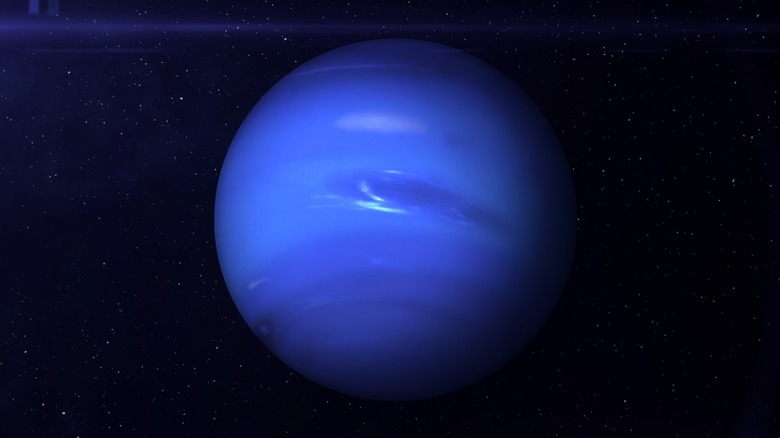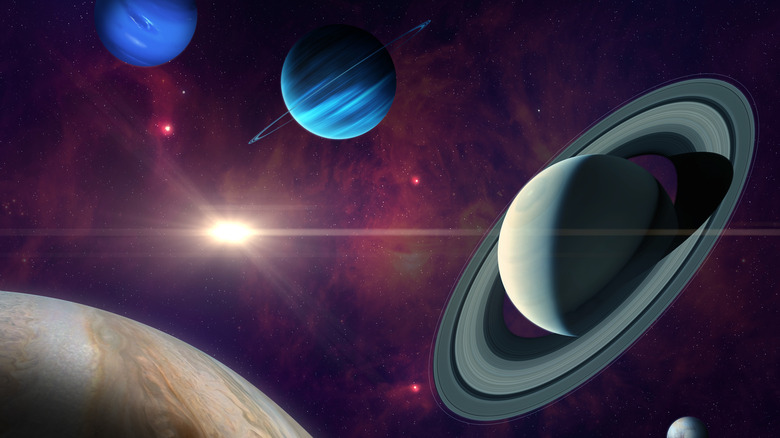Here's How Long One Year On Neptune Equates To On Earth
Neptune is the eighth and farthest planet from the sun, orbiting 2.8 billion miles away. This cold and icy gas giant has a diameter of around 30,600 miles and is mostly made of a dense fluid of water, methane, and ammonia. Its methane composition give Neptune a beautiful deep blue color, with streaks of white and lighter blue as a result of extreme winds and storms that constantly swirl around the planet (via NASA).
Because Neptune is the farthest planet from the sun, the time it takes to complete one year, or orbit, around the sun is much longer than ours. On Earth, one trip around the sun takes about 365.25 days (which is why we add an extra day to the calendar every four years). For Neptune, this trip takes a lot longer, nearly 165 Earth years, or about 60,200 Earth days (via Universe Today). So how did astronomers figure this out? It turns out the answer lies in calculations made using relatively simple math equations.
A planet's year is calculated using orbital mechanics
In 2011, Neptune completed its first orbit since its discovery in 1846 (via NASA). For most of us, that means Neptune will not complete its next orbit until well after we are gone. Before Neptune completed its first trip around the sun, scientists took measurements of the planet's position as it slowly moved across the sky over a short period of time to estimate the watery giant's orbit, in a process known as orbital mechanics. These equations were originally determined by Sir Isaac Newton and astronomer Johannes Kepler in the 17th century and then improved upon by Albert Einstein's revolutionary theory of relativity (via Britannica).
Astronomers had previously employed orbital mechanics to calculate the orbits of other planets as well. In fact, original calculations that were made when it was thought that the Earth was at the center of the solar system were off, helping fuel the realization that the sun was at the center instead (via Harvard).
The further a planet is from the Sun, the longer its year is
The farther a planet or other object is from the thing it is orbiting, the longer it should take to complete its orbit. So far, everything we have observed fits this definition. The closest planets to the sun, which are Mercury and Venus, take 88 days and 224.7 days to orbit the sun respectively, while farther out planets like Jupiter and Saturn have orbits taking 11.9 and 29.5 Earth years each (via Southwestern University).
Since Neptune is the farthest planet from the sun, it has the longest orbit of them all. But smaller, more distant objects have longer orbits still. The dwarf planet Pluto, for example, has an orbit of 248.09 years and has not yet completed an orbit since its discovery in 1930 and will not complete its first orbit until 2178, according to Live Science.


